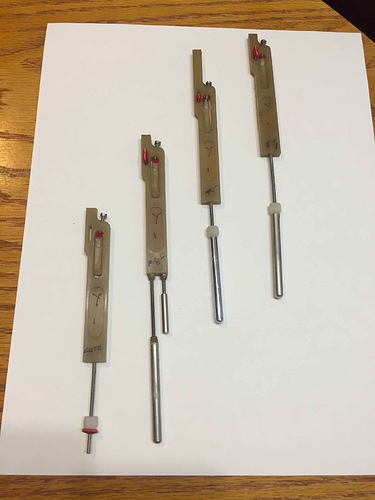I have a John Morley double manual harpsichord from 1969. 2x8 and 1x4. Built in London. I rescued it from a piano shop in Philadelphia USA a few years ago. I have no idea how it got to the US. It was unplayable, and missing parts. I managed to get it back into playing condition. The key leads (I never knew harpsichords had key leads) had “bloomed” and were rubbing. I shaved those off with a chisel, restrung it, repaired broken plectra, and replaced the dampers, which were moth eaten. I was able to play it, at least.
But then I had to put it in storage because of lack of room. I just got it out of storage today. I am retired, have lots of piano rebuilding experience, and would like to get this instrument back in reliable playing shape, and make it the best it can be. I will keep it for my own use.
I believe it has a laminated soundboard, but if so, I don’t mind. Anyone know if this is true?
The jacks are yellowish plastic, with heavy weights at the bottom. The weights screw into the jacks for adjustment, and many are corroded. I guess the heavy jacks match the heavy key leads?
There are three pedals to change registers. I hate these! There are heavy springs working against the pedals. So if you want to make a change, you must hold the pedal down with your foot.
And I have never been satisfied with the damper performance. I used piano key bushing felt. Is there a tutorial available (maybe youtube?) on replacing dampers?
Here is your chance to give free advice! Any suggestions are welcome, even if it is to cut my losses and start with a different instrument. I probably won’t do that though!
Questions:
- Should I just try to get it back into original playing condition and live with its quirks?
- Or can I make drastic changes - wooden jacks, drill out the key leads, eliminate the pedals?
Thanks for any help!
Sam in Georgia, USA

